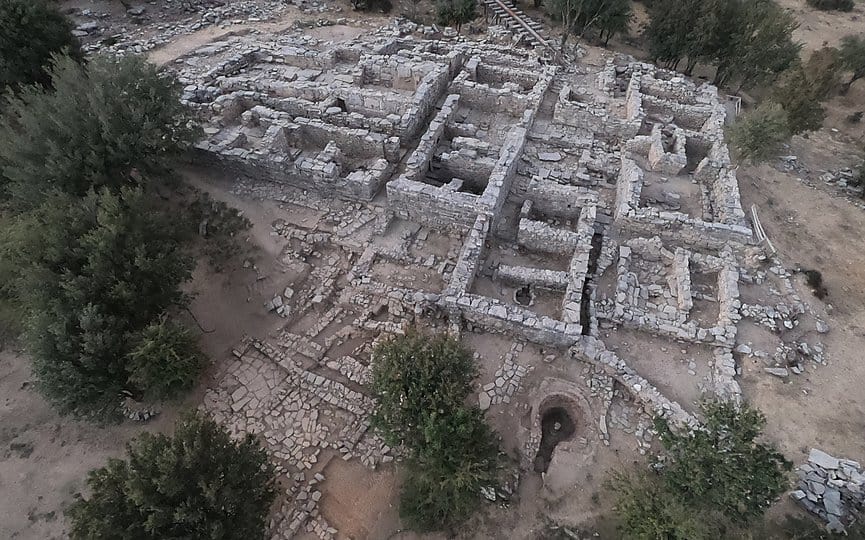Archaeologists excavating at the Zominthos mountain palace site on Crete's Mount Psiloritis have reported exciting new discoveries that indicate its use as an important religious sanctuary.
This discovery came despite the restrictions on their work over this year due to the Covid-19 pandemic.
"Once again, it is shown that the Zominthos palace had a political, economic and religious character throughout its existence, due also to its proximity to the major religious centre of the Ideon Andron, which enjoyed renown in the Eastern Mediterranean, Near East and Egypt," a culture ministry announcement said on Friday.
The Ideon Andron is a famous cave in the area.
Among the surprise finds are the remains of a burnt wooden object surrounded by thin flakes of gold, indicative of a wooden statuette covered in gold leaf and similar to gold-plated ivory statues seen in other locations. There is also a ritual pestle and a seal with an animal depiction, as well as signs of an earlier sanctuary dating back to 1900 B.C. with fragments of figurines of humans and animals, including a well-formed female figurine.
Excavations this year showed that the site had been in use since at least 2000 B.C. and had started to spread out to the surrounding space from 1700 BC, a conclusion clinched by the discovery of two new complexes this year, which also indicate that further exploration of the site is warranted.
The new complex has revealed the remains of rooms with flagstone floors and a notable drainage system, as well as pipes that begin in complex and continue north. Among the various pottery finds, one room contained a flower-shaped seal dated to the period of the early palaces, while the various pottery shards show that its use even predates the foundation of the early palaces.
"Both the drainage system and the sewage system prove the advanced technical expertise that existed on Zominthos. The use of the section excavated this year over the ages is also proved by a coin issued by the Doge of Venice Pietro Gradenigo (1289-1311), which coincides with the 4th crusade and Venetian rule on Crete," the ministry had announced.


